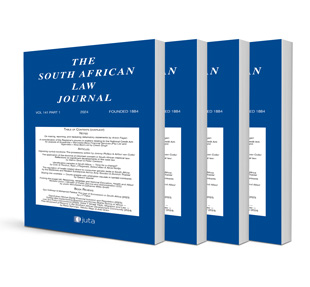
The selection of victim groups in hate-crime legislation
Author Joanna Botha
ISSN: 1996-2177
Affiliations: Associate Professor in Public Law, Nelson Mandela University
Source: South African Law Journal, Volume 136 Issue 4, p. 781-810
Abstract
A hate crime is traditionally defined as a crime motivated by bias towards a particular group of persons based on the group’s protected characteristics. A key element is that the victim must be targeted based on his or her identity, with the victim belonging to groups of persons who are not valued by society, and often described as ‘the other’. The definition of a hate crime in a legislative provision is thus dependent on the identification of groups selected to be the victims of such crimes. The second version of South Africa’s Prevention and Combating of Hate Crimes and Hate Speech Bill was published in 2018. Section 3(1) of the Bill introduces the hate-crime concept into law and identifies a list of seventeen protected group characteristics. This article examines which groups of persons should be treated as deserving of protection in South Africa’s proposed hate crime regulatory framework. I argue for a principled approach that at its core appreciates the socio-legal context in which the phenomena of hate crime occur and the significance of group vulnerability. An added constraint is that the successful implementation of hate-crime legislation is an imperative. The hate-crime construct is new to South Africa and will serve a critically important purpose. An overly broad and unscientific legislative model creates the risk of unfavourable reception, an inability to implement, and problems with constitutional justification. For the South African context, it is recommended that the drafters make use of the concept of vulnerability to select group characteristics, coupled with an appropriately worded analogous grounds provision.